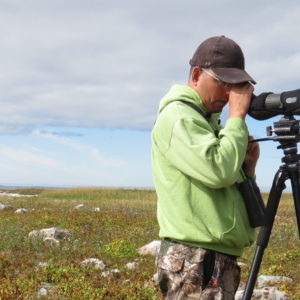On Chief Spence’s Hunger Strike
January 10, 2013
The other day, my wife and I decided to deliver some left-over firewood from summer camping trips to the First Nations camp on Victoria Island, just west of Parliament Hill in Ottawa. Chief Theresa Spence, from the Attawapiskat First Nation has been on a hunger strike, and living in the large Teepee behind the palisade on the island, to draw attention to the plight of her community.
The long access road from the Chaudière bridge passes beneath the Portage bridge, terminating in a turning circle and parking lot in front of the palisade. The entrance to the palisade was covered with plastic tarps, but there was a large pile of firewood just outside, onto which we added our small contribution. As we started moving back to the car, the window of one of the vehicles in the parking lot descended, and a woman shouted a loud and hearty “thank you so much!” That acknowledgment meant a lot to us.
Several years ago, I visited Attawapiskat for a few days on either side of a two-week canoe trip to survey birds along the Ekwan River for the Ontario Breeding Bird Atlas. My memories of Attawapiskat are still vivid. Four of us arrived in the community with a day of lay-over before a float plane was to drop us a couple of hundred kilometres inland on a calm section of the river. We spent much of the next day scrambling to find canoes and procure equipment that we have been told would be prearranged. We literally were checking people’s yards for canoes, and then knocking on their doors to negotiate rental use. Many individuals in the community were wonderfully helpful and generous to us.
That positive spirit stood in stark contrast to the despairing poverty in evidence all around us. Most buildings were in various states of disrepair. Many, perhaps most buildings were also covered with graffiti – not ‘street art,’ but vulgar slurs mainly targeting young women in the community. “So and so is a ….” So and so does ….” I felt nauseated every time I walked past one of these insults, and could not imagine the humiliation that some people had to constantly deal with.
As we waited for our plane to arrive on the dock and take us deep into the wilderness, kids wandered by asking for food. I was reminded of a visit to an extremely poor area of Central America where I had similar experiences. My impression was of a community that had lost control, where many, perhaps most people lived in poverty, in shame, with hunger and without hope.
When I hear of the problems in Attawapiskat and in other First Nations, I can understand why leaders, such as Chief Spence, would take desperate measures to reach out for help. The problems that they face must seem insurmountable. Yet, beneath the suffering in the community are a proud people, connected to the land, desperate to protect and restore their culture and claim their rights.
A few years ago, Canada signed the United Nations Declaration on the Rights of Indigenous Peoples (UNDRIP). We were one of the very last countries to sign on and did so reluctantly. That declaration basically recognizes that indigenous peoples have rights to self-determination. In part that means that activities on their traditional territories and use of their knowledge require their free prior and informed consent. This is an extremely important concept, one that Nature Canada believes in.
Chief Spence’s hunger strike is strongly associated with the Idle No More movement. This movement is, in part, in response to the federal government’s two omnibus budget bills (C-38 and C-45) that eviscerated many of Canada’s environmental laws, and removes many of the checks and balances that protect both the environment and indigenous peoples, whose cultures are closely tied to nature, from unfettered resource exploitation.
Nature Canada has joined First Nations and environmental, recreation and grassroots groups, including BC Assembly of First Nations, the Union of British Columbia Indian Chiefs and Idle No More, in opposing the federal government’s controversial attacks on environmental protection laws.
One step to addressing the issues in Attawapiskat, and the Idle No More concerns is taking the UNDRIP to heart and operationalizing its 46 articles as much as possible. We should be doing this as individuals, as organizations, and businesses, and as governments. In our search for solutions, this seems to me to be an obvious step to take.
Next, we need to begin the long, difficult work of undoing the damage that the omnibus bills have inflicted on nature and democracy in Canada. There is much work to do.



